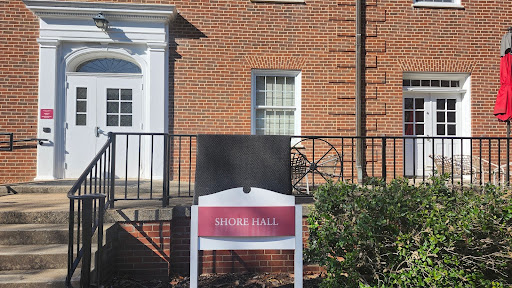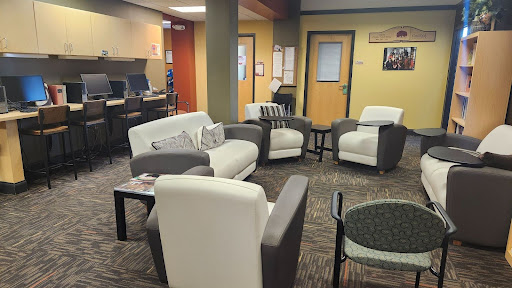For the 2025-2026 school year, Guilford students should expect rises in dining rates and reinstated parking fees after removing them for the past few years.
The college’s expenses are increasing — changes need to be made.
Because of Guilford’s 4-1 tuition plan, all students will have the same tuition rates throughout their four years, meaning current students are not subject to the 2% tuition increase.
That is reserved for incoming students.
However, they will be subject to increases of 1.5% to 3% in rates for residence halls in the North and South Apartments. And, if you live in East Apartments, there’s a 10% increase in rates because of the “additional amenities” required, according to a fee rate spreadsheet sent by Keith Millner, the acting chief operating officer. Parking fees will also be instituted for students who bring their cars to college.
But what is the reason for these price changes?
“Everything associated with running the college is going up, and so we also need to increase our costs for that,” said Steve Mencarini, assistant vice president of enrollment management and retention.
Some of these expenses are salaries for the staff and maintenance of the buildings — costs that usually increase yearly.
Despite the current financial situation of the college, Mencarini reassures that the fee increases are not associated with that.
“Many other schools have absolutely increased their tuition over the last four years,” said Mencarini. “This is a normal process for colleges to look at their expenses … and make sure they’re on track.”
This rise in rates will help secure additional revenue for the college, ensuring that it can provide for the campus and the community.
But do students know that?
“I know the school is financially struggling so the tuition increases are going towards helping the school stay open,” says Jasmine Cartwright, a sophomore here at Guilford.
Having a more open conversation with students about what these funds will be used for will help eliminate questions and false assumptions.
The question is now whether or not students will be able to afford the changes.
“I’m … moving to a place close to campus so I can walk or bike because the parking pass is too expensive, especially with the lack of parking spaces,” says Cartwright. She also plans to live off campus because it would cost less.
A parking pass is $100 per semester and the 2% increase in tuition, while seeming small, causes a larger financial impact for students.
The Financial Aid Office has brought Scholarship Universe to Guilford to assist students in covering their expenses. This scholarship database is a platform that matches students at many universities to scholarships appropriate for their situation.
All a student needs to do is log in using their Guilford email and answer questions about their background to be matched with scholarships according to what they need.
“Students create a profile on the website, and then the website matches scholarships to them, versus just going to type in the word ‘scholarship’ onto Google,” said Mencarini.
Scholarship Universe is a more efficient way for students to find ways to pay for their funds while at Guilford College.
While there are some new financial aid initiatives, some students question why they weren’t included in this conversation and are suddenly having these expenses thrust upon them.
“They gave us only a couple weeks to come up with that extra money and as someone who works to pay for school it made it significantly harder,” said Cartwright.
Yes, the cost of upkeep for colleges typically increases as the years pass, but why should students have to make up the difference and face more financial insecurity?
“Why should we pay for [the increased expenses of the college] as students?” said Sara Arabzadeh, a senior at Guilford College.
While administrators assure that these changes are part of a normal process, students like Cartwright and Arabzadeh question why they are the ones shouldering the financial burden.
For some, the rising costs mean making difficult choices — moving off-campus or ditching their cars to stay afloat. Others are left searching for scholarships, hoping that platforms like Scholarship Universe can bridge the growing financial gap.
But as students face these rising expenses, one question remains: At what point does the price of education outweigh its value?












